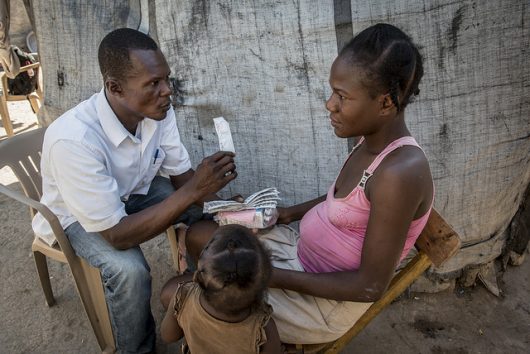HIV/AIDS: One of the Top Diseases in Antigua and Barbuda

The country of Antigua and Barbuda currently has the fourth-lowest mortality rate in the Caribbean region. Despite a lower mortality rate, in this small country of 90,755 people, communicable diseases are some of the most deadly. Diarrhea and lower respiratory infections are the most common diseases, followed by the highly infectious HIV/AIDS virus, which affects 2.2% of the population and is one of the top diseases in Antigua and Barbuda.
Because HIV/AIDS is responsible for 19.4% of deaths in Antigua and Barbuda, the government has taken direct action to prevent, treat, and inform people of the disease.
In 2001, Antigua and Barbuda officially called upon the United States for a systematic global response to the HIV/AIDS virus—a plea that was met with generous funding for HIV antiretroviral drugs available to the country for increased accessible treatment. Further, the U.S. and other external agencies including the U.N. Programme on HIV/AIDS (UNAIDS) and the Central Asia Regional Economic Cooperation Program (CAREC) assisted the country in attaining accessible HIV testing to all individuals. Since then, the HIV/AIDS-awareness response in the country has grown tremendously, though the government still faces hardship in preventing one of the top diseases in Antigua and Barbuda.
In 2013, the HIV mortality rate had increased by an alarming 183 percent since 1990, and in 2015, the country, unfortunately, saw 48 new cases of diagnosed HIV in both males and females between 20 and 60 years of age.
The good news is that the country’s government provides continuous HIV/AIDS treatment and care services for free and operates from its own national response team with some help from outside relief organizations.
In 2015, the U.S. President’s Emergency Plan for AIDS Relief (PEPFAR), tested and counseled more than 3,000 people in the Caribbean region and provided preventative, comprehensive and evidence-based interventions for more than 7,000 individuals. Progress like this proves that preventative care and external aid, paired with $22 million in funding to the region in 2016, has led to great success in combating one of the top diseases in Antigua and Barbuda.
Internal efforts to combat the disease have dramatically increased the speed of treatment and prevention in the country as well. In 2015, the Barbuda Council collaborated with agencies such as Antigua State College, Community Development Division and AIDS Secretariat and Partners, to host 36 HIV awareness programs. Among these were multiple counseling sessions including testing and distribution of informational materials and health fairs encouraging the education of HIV prevention.
Additionally, the government now provides a clinical care team to all patients, and health care providers receive training for new HIV Care and Treatment Guidelines.
Furthermore, the country is working to overcome challenges of treating HIV, such as limited data on people most at risk, by attempting to increase HIV testing for all people and preparing to mobilize HIV assessment and care into primary health care.
Because of relief efforts both inside and outside the country, the disease is becoming less prevalent. For example, premature deaths due to the virus decreased by 28.9 percent between 2005 and 2015. It is the government’s ambitious programming and training for the population that should continually decrease the number of people living with HIV/AIDS in Antigua and Barbuda.
– Olivia Cyr
Photo: Flickr
